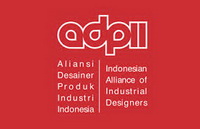Eksplorasi material daur ulang sampah polystyrene (PS) menggunakan metode material-driven design
Abstract
Every year the Indonesian people are estimated to contribute 0.48-1.29 million metric tons of plastic waste to the oceans. Polystyrene (PS) takes more than 500 years to decompose naturally among the types of trash thrown away. For local producers, PS waste recycling requires more processing than other thermoplastic waste processing. On the other hand, PS waste processing is interesting to develop because of its shiny and transparent nature, so it is used as a jewelry product that cannot absorb a lot of waste. Therefore, this study aims to explore the uniqueness of PS recycling further so that it can be utilized optimally by local plastic waste recycling business actors. This study uses primary data collection methods such as observation, focus group discussions, and experiments. Experimental stages are carried out to find the proper treatment and get a unique texture and shape different from other materials. Furthermore, an analysis is made using the material-driven design method to see the value of the material. This analysis produces material visualization concepts such as uneven, imperfect, artless, translucent, and luxurious, which are suitable to function as vocal points for room styling. This study found that deficiencies in processing existing PS recycled materials can be overcome effectively and efficiently by melting 75 percent of the shredded plastic.
Keywords
Full Text:
PDFReferences
Ashby, M., & Johnson, K. (2013). Materials and design: the art and science of material selection in product design. Butterworth–Heinemann.
Juniper, A. (2011). Wabi sabi: The Japanese art of impermanence. Tuttle Publishing.
Karana, E., Barati, B., Rognoli, V., & Zeeuw van der Laan, A. (2015). Material driven design (MDD): A method to design for material experiences. International Journal of Design, 9(2).
Kementerian Lingkungan Hidup dan Kehutanan RI. (2021). Capaian Kinerja Pengelolaan Sampah. Retrieved from https://sipsn.menlhk.go.id/sipsn/
Kementerian Perindustrian RI. (2019). Industri Kemasan Incar Omset US$ 7,3 Miliar. Kementerian Perindustrian RI. Retrieved from https://www.kemenperin.go.id/artikel/20344/Industri-Kemasan-Incar-Omset-US$-7,3-Miliar
Kim, K.-B., Do-Seung, C., & Jang, J.-S. (2020). A Study of Product Design using Recycled Materials. International Journal of Advanced Smart Convergence, 9(1), 70–81. https://doi.org/10.7236/IJASC.2020.9.1.70
LPSPLSorong. (2020). Ada apa dengan Sampah Laut? Retrieved from https://kkp.go.id/djprl/lpsplsorong/artikel/22801-ada-apa-dengan-sampah-laut
Mawardi, I., & Lubis Husrin. (2018). Proses Manufaktur Plastik & Komposit (A. Pramesta, Ed.). Penerbit ANDI
Paramita, A., & Kristiana, L. (2013). Teknik focus group discussion dalam penelitian kualitatif. Buletin Penelitian Sistem Kesehatan, 16(2), 117–127.
Priandika, B. S. (2019). Pengolahan Limbah Plastik Menjadi Bench dan Planter dengan Konsep Sturdy dan Modular untuk Taman Kota. Retrieved from https://www.youtube.com/watch?v=o5S1jWyDSjM
Rognoli, V., Bianchini, M., Maffei, S., & Karana, E. (2015). DIY materials. Materials and Design, 86, 692–702. https://doi.org/10.1016/j.matdes.2015.07.020
Sivaprasad, S., Byju, S. K., Prajith, C., Shaju, J., & Rejeesh, C. R. (2021). Development of a novel mycelium bio-composite material to substitute for polystyrene in packaging applications. Materials Today: Proceedings, 47, 5038–5044. https://doi.org/10.1016/j.matpr.2021.04.622
Sugiman, S., Setyawan, P. D., & Anshari, B. (2019). Effect of fiber length on the mechanical properties and water absorption of bamboo fiber/polystyrene-modified unsaturated polyester composites. IOP Conference Series: Materials Science and Engineering, 532(1). https://doi.org/10.1088/1757-899X/532/1/012008
Precious Plastic Community Academy. (2022). The Basic of Plastic. Retrieved from https://community.preciousplastic.com/academy/plastic/basics
Veelaert, L., du Bois, E., Hubo, S., & Ragaert, K. (2017). Design from Recycling Manual. Dalam Design from Recycling.https://www.researchgate.net/publication/324220953.
DOI: https://doi.org/10.24821/productum.v5i2.7856
Refbacks
- There are currently no refbacks.
p-ISSN 2477-7900 | e-ISSN 2579-7328

This work is licensed under a Creative Commons Attribution 4.0 International License.
Like & Follow Us










